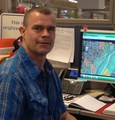Beyond the Guidebook 2015: Capital Region’s Dale Green looks into the future and foreshadows the ‘Regional Team Approach – Looking Ahead’

“The CRD is composed of 13 municipalities and 3 electoral areas. Watershed boundaries are not political boundaries or even neighbourhood boundaries. When local government champions come to the table to work with regional staff and each other, great things happen,” wrote Dale Green. “We continue to look forward and enhance cooperative efforts to make us all stronger and better able to protect and enhance our watersheds.”
Beyond the Guidebook 2015: Time-Line identifies milestones in evolution of Capital Region’s “watershed-based approach”

“Moving to a watershed-focused program allows the Capital Regional District to support the core area municipalities with new strategies for environmental protection, including an increased focus on dealing with watershed stressors near the source rather than at the municipal infrastructure or receiving environment level. Additionally, the strategy supports municipal efforts in watersheds that cross municipal boundaries,” wrote Glenn Harris.
Beyond the Guidebook 2015: Cowichan Region's Kate Miller elaborates on "Our Regional Team Approach – why it is different but perfect for us"

“We truly have a rich basis in which to begin the process of stepping back, learning and reflecting on our next steps,” wrote Kate Miller. “As we look out into the future in a changing environment – our new normal – this richness and the depth of community participation can only help our region’s future resiliency…..at the end of the day we need to have everybody at the table.”
Flood AND Drought: “New Normal Cowichan is a regional adaptation initiative. It illustrates what putting ‘water balance thinking’ into action looks like,” stated CVRD's Keith Lawrence at the 2015 Feast AND Famine Workshop

“Communication had been happening in the region for many years, but this year was a more deliberate attempt to make that communication happen in a coordinated way. We worked with the various local governments to gather information about the impacts. And we also looked at what can we do collectively to solve the issues,” stated Keith Lawrence. “In 20015 we had a coordinated approach to communicating what is happening in our region.”
Inter-Regional Collaboration & Watershed Health in the Georgia Basin: Cowichan Valley Regional District strives to bridge gap between awareness of what needs to be done vs ensuring action will happen

“The IREI program supports the CVRD’s ‘Phase II Regional Asset Management Project: Built and Natural Systems’. This is an important capacity building project to support the development of an asset management program for regionally funded CVRD assets. This includes examination of integrating natural systems into our asset management planning,” wrote Jacob Ellis, Deputy CAO, in 2015.
Delta’s rain garden experience informs Georgia Basin Inter-Regional Educational Initiative

“Storm Water Management innovation in BC is the result of not being overly regulated. Establish sound principles. Apply them. Adapt to the specific site conditions. Do not be too prescriptive, it may take away the opportunity for innovation,” states Hugh Fraser. “Creating a watershed health legacy will ultimately depend on how well we are able to achieve rain water management improvements on both public and private sides of a watershed.”
MAGAZINE ARTICLE: "Sustainable Watershed Systems" connects dots between municipal infrastructure and health of watersheds

Released in December 2014, ‘Asset Management for Sustainable Service Delivery: A BC Framework’ is a game-changer. “Sustainable Service Delivery is the New Paradigm. It is the singular aim. Sound Asset Management practices prevent in-service failure of assets which consequently cause service delivery interruptions. Therefore, Asset Management is the means to achieve the aim,” states David Allen.
2009 COMOX VALLEY LEARNING LUNCH SEMINAR SERIES: “The spotlight was on how to implement the regional team approach – that is, a unified approach from all levels of government,” stated Kevin Lorette, Chair, Comox Valley-CAVI Regional Team, at the conclusion of the 2009 Series

“Water is the underpinning of the community, and this is why an integrated approach to settlement and land development is essential for the Comox Valley,” stated Kevin Lorette. “Water is a key component for all the regional strategies that we are currently developing simultaneously. All will have to be integrated into one plan. At the core is growth – we are bringing these strategies together in 2010 to manage growth. We will be looking at all aspects of water.”
The New Paradigm: Watershed Systems as Infrastructure Assets

“Where a local government regulates land use, a watershed is an integral part of the drainage infrastructure assets of the local government. More specifically, the three pathways (surface, interflow, groundwater) by which rainfall reaches streams are infrastructure assets. They provide ‘water balance services’. This has implications for asset management,” stated Richard Boase.
Georgia Basin IREI Connects the Dots: Sustainable Watershed Systems & Asset Management

“The asset management process is a continuum; and nature is an integral part of a community’s infrastructure system. The process starts with the engineered assets that local governments provide. Communities will progress along the continuum incrementally as their understanding grows. By also accounting for and integrating the services that nature provides, over time they can achieve the goal of Sustainable Service Delivery for watershed systems,” states Wally Wells.

